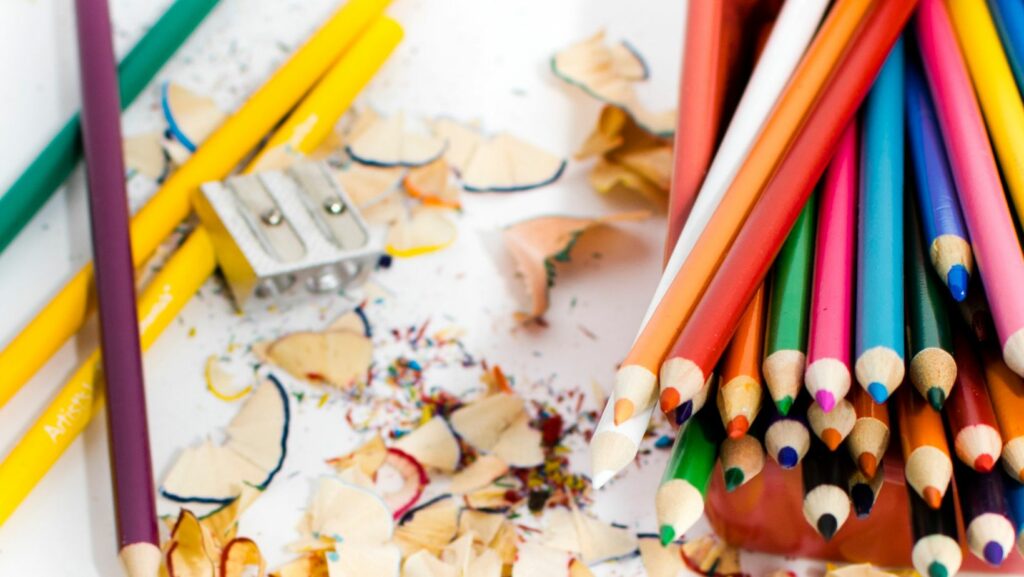Pre-owned art supplies can benefit from a thorough cleaning after purchase. Paint brushes, for instance, can be cleaned by swishing them around in a jar filled with a mixture of warm water and mild soap before being air-dried. Artistic palettes festooned with old and hardened paint can regain their shine by gently scraping off the paint, following it with an application of white spirits. Be cautious, however, as forceful cleaning can damage these delicate supplies.
Used Art Supplies
 Unleashing my creativity with used art supplies has not only improved my artistry but also introduced me to a world of incredible benefits. Let’s dive deeper into how cost-effectiveness and environmental impact come into play.
Unleashing my creativity with used art supplies has not only improved my artistry but also introduced me to a world of incredible benefits. Let’s dive deeper into how cost-effectiveness and environmental impact come into play.
Planning for a masterpiece doesn’t mean breaking the bank. Choosing used art supplies opens up a cost-effective option for artists. One may find a palette full of colors or a set of bristle brushes for a fraction of the retail price. High-priced items such as easels, artist-grade paints, and drawing tablets often surface in the used market at considerable discounts. For budding artists and even seasoned professionals, these savings aren’t merely monetary; they provide the liberty to experiment.
Environmental Impact
Transforming used art supplies into masterpieces isn’t just good for my wallet – it’s also good for our planet. Purchasing second-hand items reduces the demand for newly manufactured goods, thus limiting the consumption of natural resources and energy in production processes. Remember, each time we choose to rehome a pre-loved paint box or a gently used canvas, we’re effectively recycling these items, decreasing the waste headed for landfills. Ultimately, the decision catapults us a step forward in our collective efforts to protect Mother Earth.
Evaluating the Quality of Used Art Supplies
 Moving deeper into the world of pre-owned art supplies, it’s crucial to understand the nitty-gritty of evaluating and judging their quality. Let’s delve into some inspection tips and identify common signs of wear for used art supplies.
Moving deeper into the world of pre-owned art supplies, it’s crucial to understand the nitty-gritty of evaluating and judging their quality. Let’s delve into some inspection tips and identify common signs of wear for used art supplies.
Inspection Tips
Carrying out a thorough inspection before purchase prevents future disappointments. Embarking on this path, I equip myself with the following tips:
- Examine exterior: Check for any visible cracks, chips or stains on the item. Broken tubes, for instance, may harden the paint within.
- Test functionality: Ensure that the item works in the way it’s designed to. If it’s a pair of scissors, do they cut properly? If it’s an easel, does it stand firm?
- Smell the Paints: An unpleasant smell can indicate that the paint has spoiled and is unfit for use.
Rain or shine, these tips come in handy during the evaluation process for any used art supplies.
Common Signs of Wear
Understanding the signs of wear aids in distinguishing between sturdy, reusable art supplies and those nearing their end. Certain indicators reflect this:
- Faded labels: Labels on art supplies like paint tubes, brushes or pastels often fade with excessive use and age.
- Hardened or separated paints: Age and improper storage often causes paints to either harden or separate.
- Loosened joints: Bygone days can weaken the joints of easels or drawing tables, thereby reducing their stability or adjustability.
Discerning these signs of wear empowers artists to make informed decisions when procuring used art supplies.
Where to Purchase Used Art Supplies
 You’ve learned about the benefits and the how-to’s of choosing second-hand art supplies. Here, I’ll guide you where to get these hidden treasures.
You’ve learned about the benefits and the how-to’s of choosing second-hand art supplies. Here, I’ll guide you where to get these hidden treasures.
Spanning the virtual spectrum, you’ll find numerous online platforms selling used art supplies. eBay, letgo, and Etsy are popular sites reselling second-hand items including art materials. They offer an extensive range of products, from gently-used brushes to partly consumed paint tubes. Remember, before purchasing, consider the seller’s reputation and the product’s description and images, especially if a return policy isn’t in place.
Local Art Stores and Thrift Shops
Venturing out physically, your neighborhood can provide a rich hunting ground for used art supplies. Specialty art stores often carry consignment sections, and thrift shops like Salvation Army and Goodwill are famous for their wide-ranging inventory. Keep an alert eye for garage sales, another unexpected goldmine for discounted art materials. Product inspection becomes easier here as, contrary to online purchases, you can touch, feel and examine before buying.



